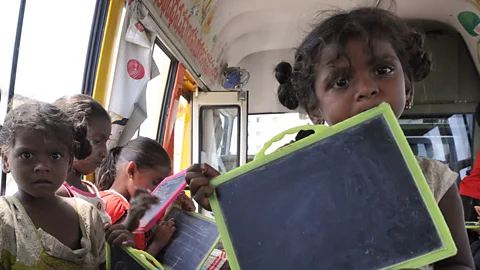Giving net lessons to the world’s poorest

We are in the midst of an online education revolution, aimed at benefiting us all. But how do we help the two-thirds of the population with no internet access – that is, those who would benefit the most from access to these tools?
The last few years has witnessed a revolution in online learning, many people are turning to the internet to educate themselves, switch careers, or change their life. This is fantastic as people have access to resources they never had before, says Jamie Alexandre at the Foundation for Learning Equality, but the fact that two-thirds of the world’s population still doesn’t have access to the internet means that a large proportion of people are excluded from this. And it’s the proportion of the world that would most benefit from this: the poor and disadvantaged.
What Alexandre is doing is to create platforms that host all these resources and distribute them to communities that have little or no online access. KA Lite, their platform, allows students to do exercises, watch videos, and it tracks their progress. This has been distributed to over 80 countries around the world. It is open source, so anyone can download it, download the content to fill in the gaps, and then deploy that into any classroom, home orphanage, or any facility around the world.
What he has found is that children become highly engaged when they get immediate feedback on work. Teachers get more empowered, as they can respond to students and tailor lessons.
There are several initiatives trying to connect the entire world to the internet, but the needs of unconnected communities need to be addressed now, says Alexandre. If we wait, they will be left behind.
Jamie Alexandre spoke to BBC Future at The Atlantic Meets The Pacific conference.
For more in our Future Education series, click here.
If you would like to comment on this or anything else you have seen on Future, head over to our Facebook page or message us on Twitter.
